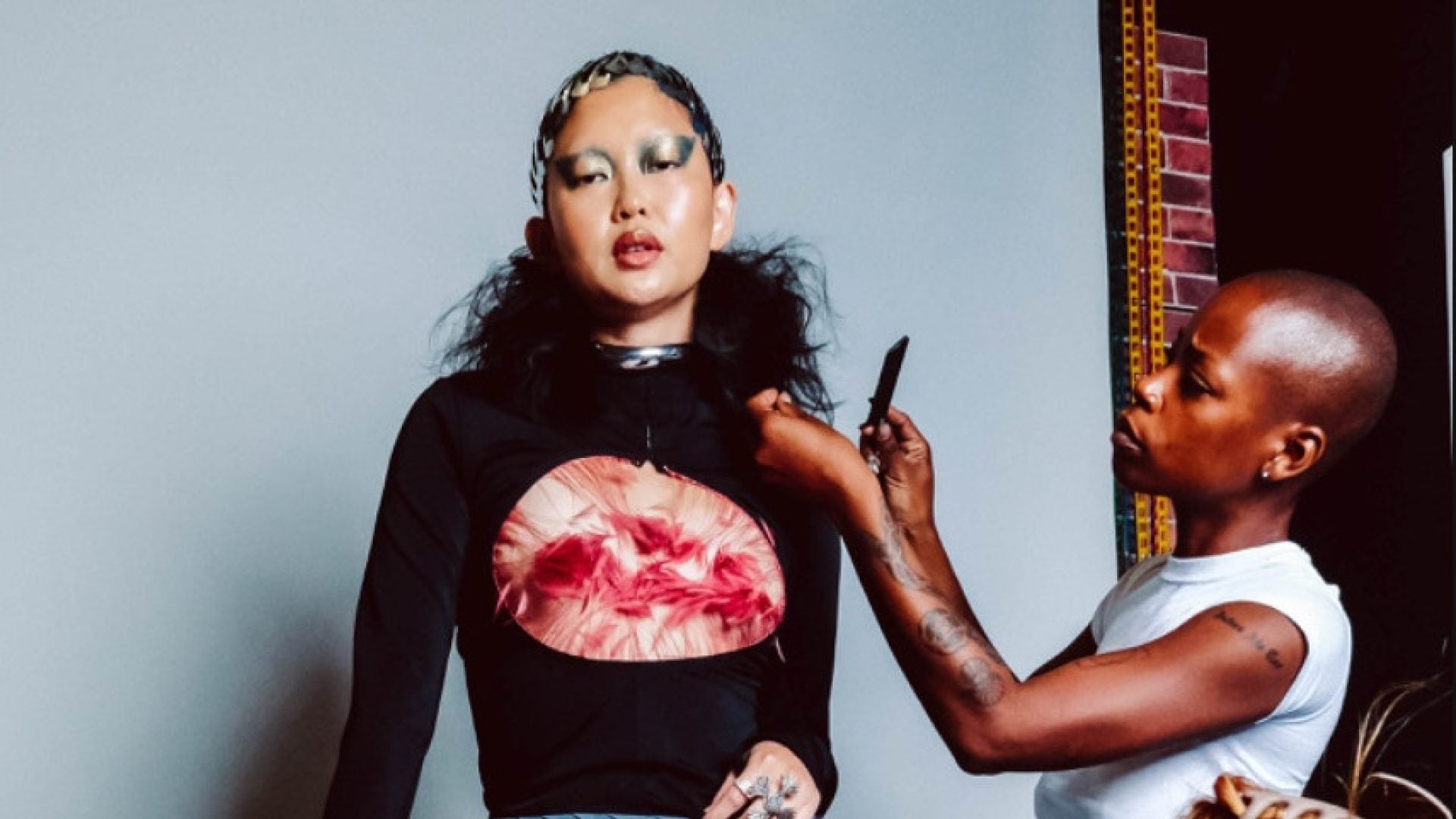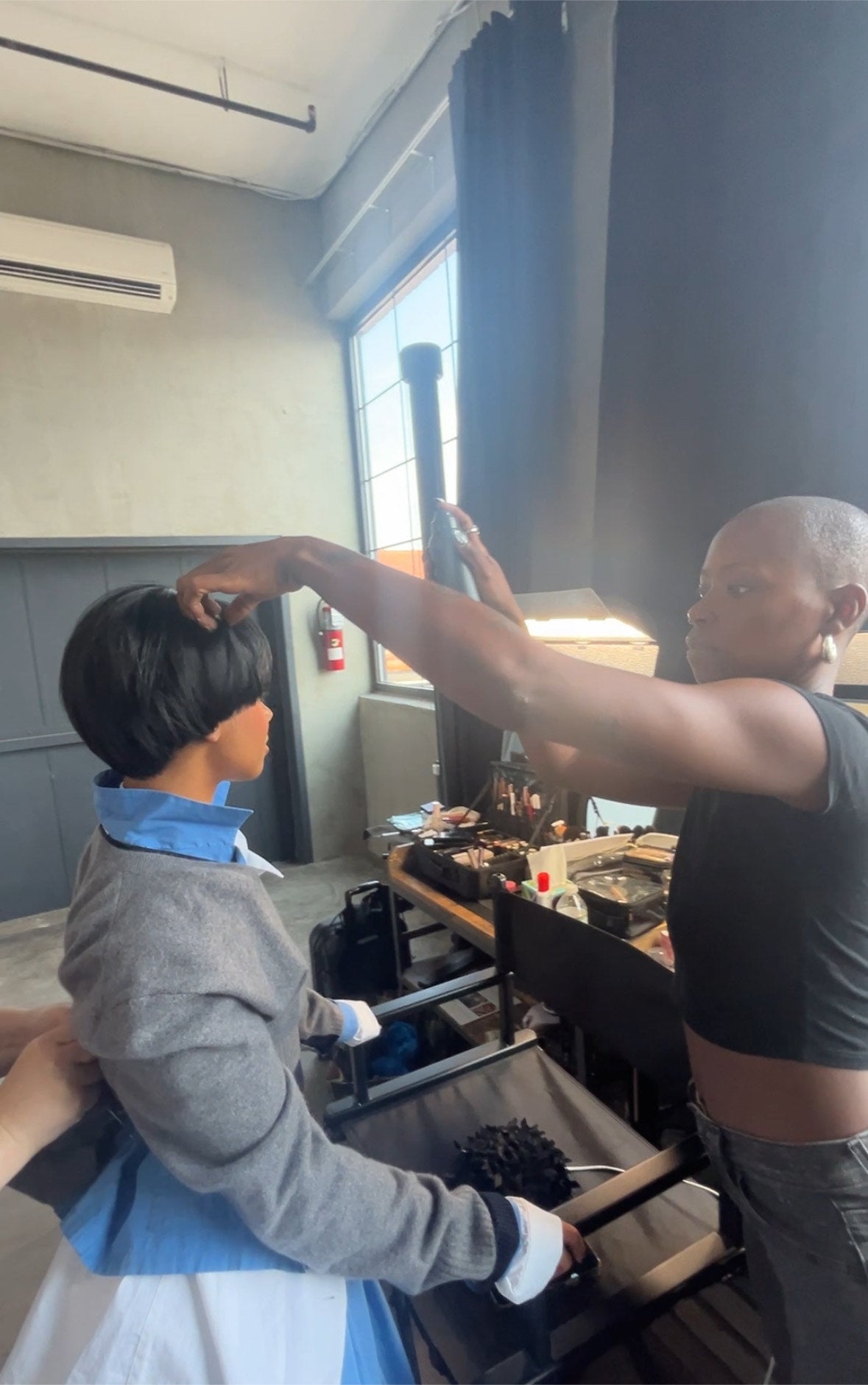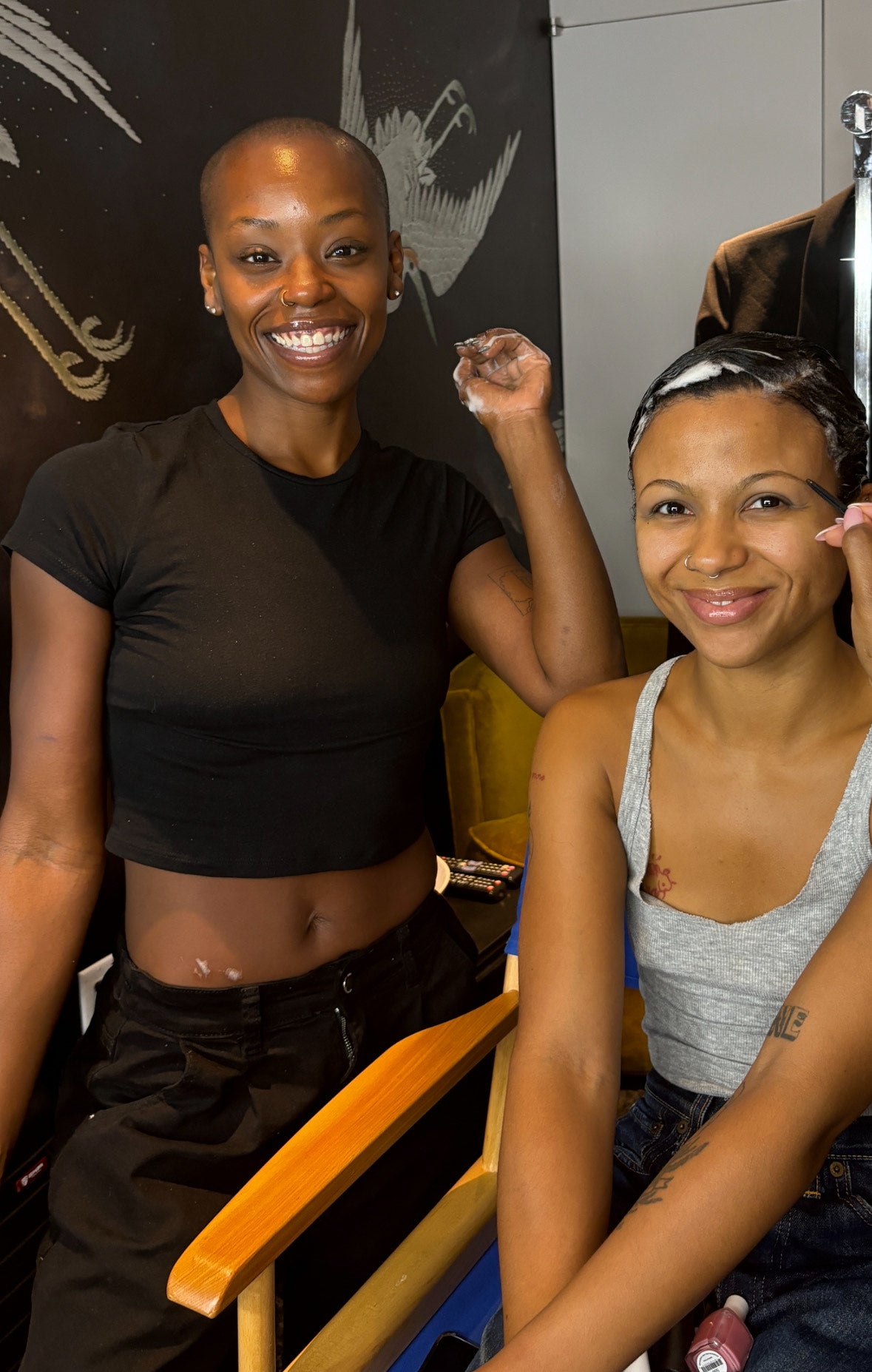
“When I was young, my mom’s hair stylist asked me to dry my mom’s extensions.” And, although the now hair stylist, Cody Ainey, had never done it before, “I managed to dry them very quickly without any guidance,” she tells ESSENCE of jheri curled youth. “I remember Miss Antoinette saying, ‘You know, Annette, your daughter’s hands are blessed,’” which turned her into the hair salon’s 11-year-old shampooist.
In the years after, she graduated with honors at Paul Mitchell Cosmetology in Baton Rouge, Louisiana before landing a job at Premiere Beauty Salon. Following the lead of a number of local stylists throughout the early 2000s, Ainey jump started her career behind a salon chair. Then Hurricane Katrina hit. From then on, “I was what they call a kitchen beautician,” Ainey says. “I would be braiding hair or doing extensions in the kitchen or in the back room.”
From massaging the ears and back of neck to release emotional tension, to feeling all the hidden secrets held within the scalp, hairstyling has long been part beauty, part energy work for Ainey. “Even if the person in the chair doesn’t know it, in holding that head and touching that scalp and washing it and massaging it, stylists sometimes don’t even understand how you’re undoing so much,” she says.
However, with the job market left devastated in the years after Katrina, Ainey supplemented her income with other avenues. A few years ago, she entered into the film industry as a first team PA—having worked on set with actress Myha’la among others. But on set ailments led her back into the arms of hair styling. “Every single person, from the head of the hair department down to the fourth chair, was sick [with the COVID-19 virus],” she says. So, “I dove inside of the hair trailer.”
In a career full of isochronal hurdles, it’s the inner work that’s kept her focused and grounded. “Doing hair is secondary to the spiritual work and the healing practice that scopes the craft,” she says. “By entering this space with the mindset of being a healer, I’m doing work that’s deeper than the style which can’t be put on and taken off.”
Below, ESSENCE talks to Ainey about her favorite products, debunking hair myths, and what healing means in the chair.

Her current favorite products:
“I just cut off my locs so I’m not really using any. I don’t have a consistent hair regimen. I tend to stick to carrot oil, avocado oil, and black castor oil, just to keep my scalp hydrated in a moment when it’s really hot outside and I don’t want it to clog my hair pores. I use my face moisturizer on my scalp since I have a short fade. It’s the exact same scalp, exact same skin that you have on your face that has to be taken care of the exact same way. It’s truly helped with the dry patches that I experienced when I had locs when I’m on set.
I don’t believe that there is a White hair care brand that doesn’t work on Black hair or a Black hair care brand that doesn’t work on White hair. I believe that all hair care products can be used for every single person. It’s just a matter of understanding the hair texture that you’re working with. Oribe, Bumble and bumble, Keracare, GÖT2B, Not Your Mother’s, and Kristin Ess are all brands I use from time to time.”

Her favorite hairstyle:
“My priority is addressing what makes my clients feel most comfortable. It doesn’t always come with a level of creativity. Being seen and being heard, I recognize, is the biggest thing Black women are screening for when they are in the chair getting taken care of.
It could be something as simple as a slick mold down that makes my client feel chic, fab and see herself in the mirror or it could be something as exciting as customizing a wig and creating a corridor or a portal for a client to dive into a personality of theirs that they didn’t know that they could embody with hair.
I love when my clients see themselves in the mirror and they’re not searching for themselves. And I also like when my clients wanna be daring and try something different and oftentimes I’m called to provide both of those services, whether it’s on set in theater or at a shoot.”
Her top tip for healthy hair:
“Cleanliness. Cleanliness is my top tip. There’s a lot of people, whether they be men or women, that have this idea that dirty hair is the best hair to grow and to style. I think that that’s just not true. I believe that the healthiness of the hair lives in the follicle, it lives in the root, the space, the pore that the hair grows from.
When we keep that clean, just like we keep our bodies and we keep our faces and we allow the hair to breathe and we take away the weight of build up and product residue and then relayer the things that we need within a consistent hair regimen. We can always reach the goal that we want.”
A hair myth she wants to debunk:
“There is no type of hair texture in any way, shape or form that’s too difficult to manage. It’s either you specialize in hair and know how to do hair or you don’t. The hair does not dictate your ability to manipulate it and bring it to the end result that the team is expecting. It’s your skill set and your talent that takes you to that place.
When I hear, “‘oh, my hair is so kinky and oily. It’s just so difficult to, to comb out or brush out.’” No, there’s just a special tool that will make that a little easier. When a woman is on set and a stylist might not be experienced with natural hair, White or Black, or might not be experienced with chemically processed hair, White or Black and says ‘it’s complicated’ it’s because you haven’t done the time to do your research to learn what products work for chemically treated hair.”

What she’s learned from her clients:
“I’m not doing hair because I’m just the best hair stylist in the world that can do it. I’m doing hair because there’s a lot of Black women out there that need the healing that need the space held and needs someone that looks like them and understands them to discern the desires of their heart outside of all of the other things that they’re trying to manage.
When someone can speak to the needs of your heart, you can be vulnerable and spill it all out, that in and of itself takes a big chunk of a responsibility and a task off of my client’s list of things to do that day. And for me, that’s one of the most rewarding things about the experiences and the conversations that I’ve had with my girls.”
How she uplifts her clients:
“The main thing I tell my clients to uplift them and make them feel comfortable is I want to do what they want because what they want matters most to me. I feel like in the industry, competitive hairstylists, artists in general come into a space with their own vision in their mind that they want to plant onto the head that’s there. And then it makes the actual client’s voice, the smallest voice in the room.
When I tell my clients, ‘I want to do what makes you happy, I want to get you to where you want to go in a way that suits you best’ it gives them a sense of self empowerment. It affirms their self agency and their ability to still dictate what they look like. Even if there’s a bigger vision that we’re trying to get to.
It makes the space less transactional.and it makes them feel more empowered. I think that that’s the most fulfilling thing that I want to encounter every single time I’m on the set.”
